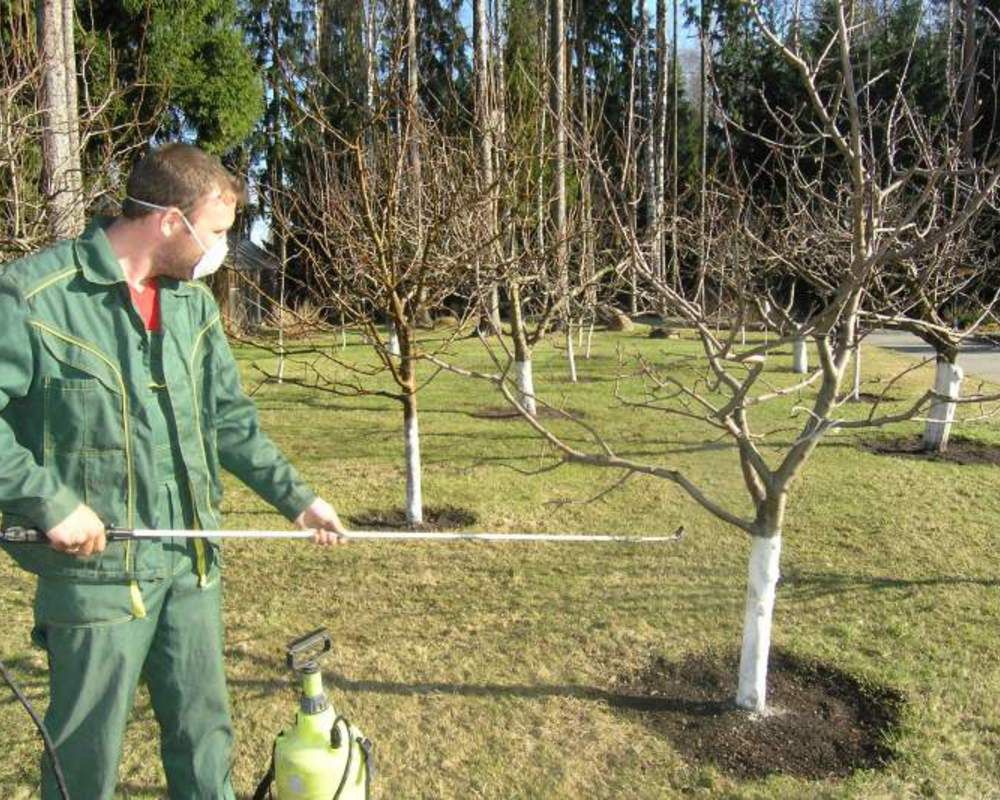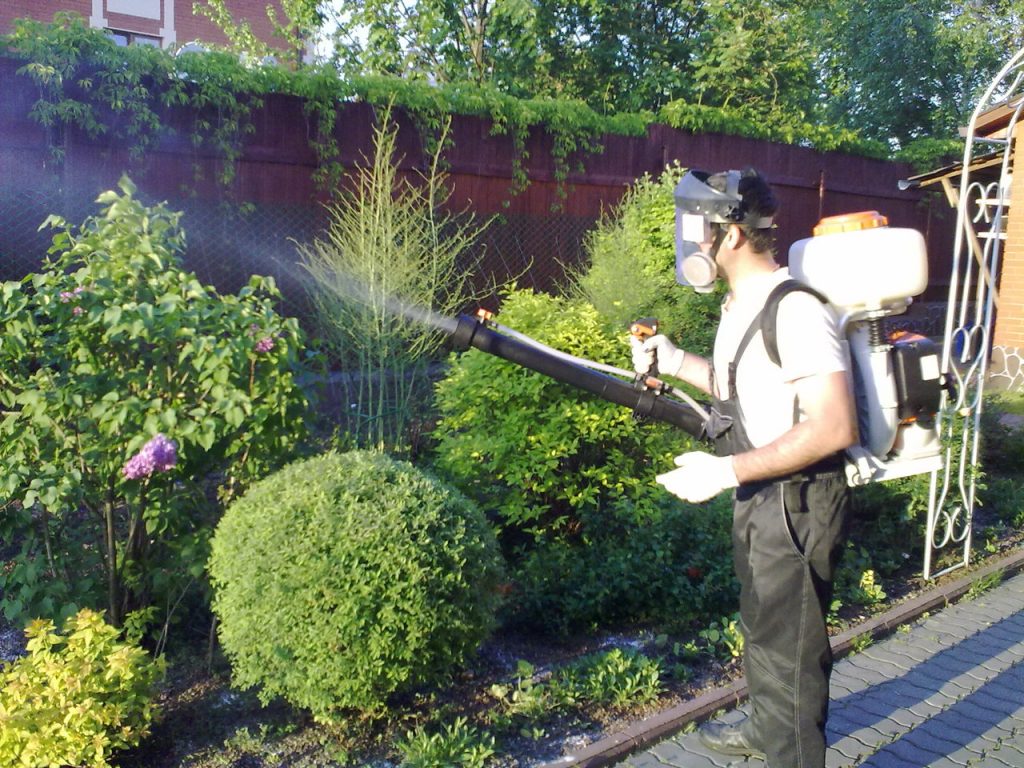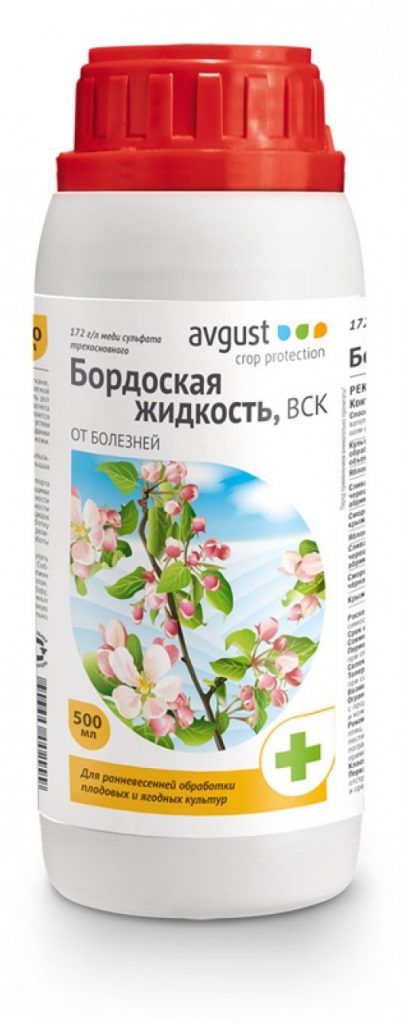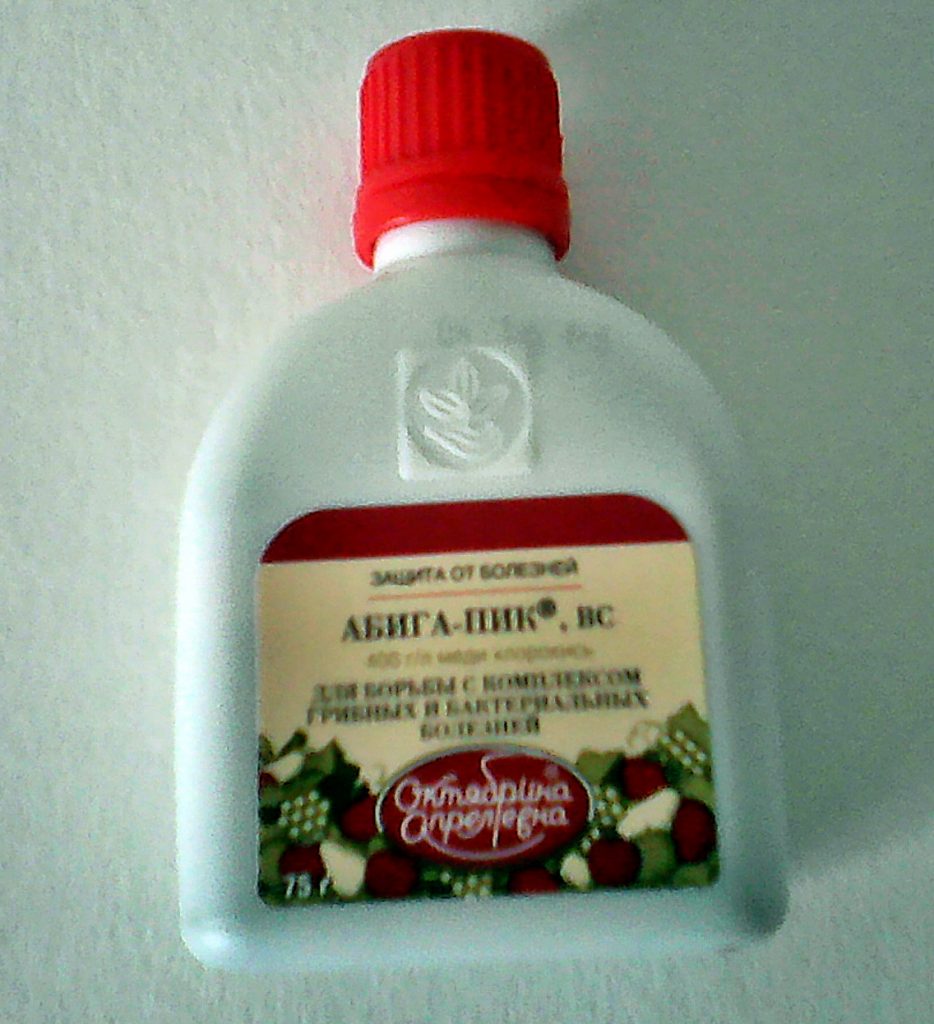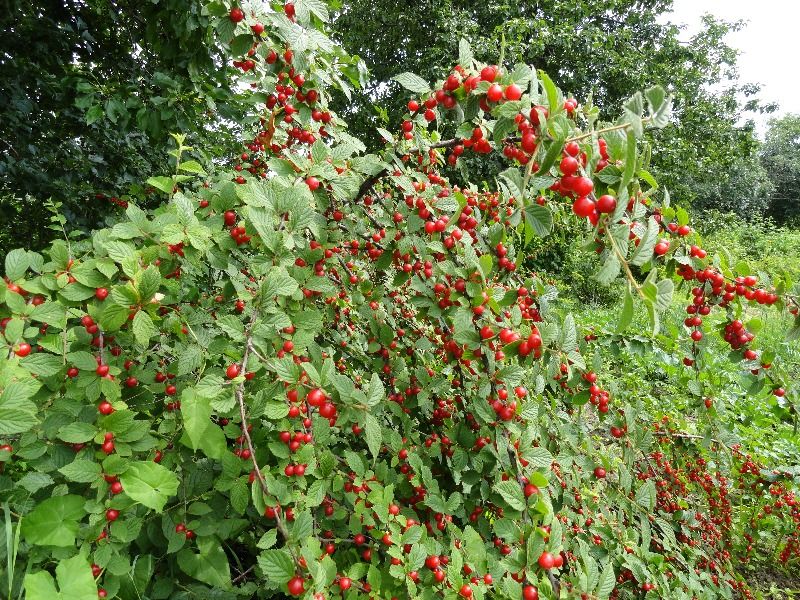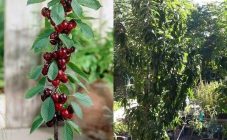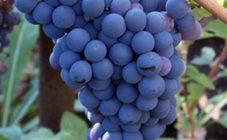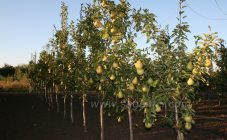Content:
Spraying of fruit trees in spring should be carried out even if there were no problems with diseases and pests in the last season. Infections can be spread by wind, birds, insects. Spraying is a procedure to prevent the appearance and destruction of such parasites and diseases as aphids, flower beetles, moths, caterpillars, ticks, rot, scab, spotting, coccomycosis, moniliosis. The defeat of some diseases and pests can leave the owner of the garden without a crop, while others can completely destroy the trees.
Timing of spraying trees
In spring, you can start treating trees at temperatures from + 4C °. The procedures are carried out in calm and dry weather. The rain that has passed after spraying can wash off the active ingredients of many drugs. Before spraying, the trees are prepared: old branches are removed, pruned, the moss is gently cleaned from the old bark with a metal brush. Fallen leaves around the trunk circle are removed. For spraying, choose the morning or evening of a cloudy day. Most drugs have toxicity classes and are dangerous if inhaled and in contact with human skin, therefore, processing is carried out in special protective clothing.
After pruning the branches and before spraying, all cracks and cuts should be treated with garden pitch, allowing the cuts to dry.
Spraying should be carried out immediately after the preparation of the working liquid, if you spend time and do not use the ready-made solution, it can produce the opposite effect, become safe for pests and dangerous for the plant. It is not worth storing drugs for future use, most of them are poorly stored or caked.
Spraying calendar
- The first treatment is carried out in early spring on dormant buds. With the beginning of the growing season, insects and their larvae overwintering on trees and in the soil awaken. At this time, high concentrations of processing drugs are used. For example, a 3% solution of Bordeaux liquid is used.
- The second treatment is carried out according to the so-called "green cone", the period of budding. At this time, trees can be affected by leaf-eating, leaf-sucking insects, scab. At this time, drugs such as Iskra, copper sulfate are used.
- The treatments are repeated in May, after flowering and at the beginning of the ovary formation. The period after flowering is one of the most important for spraying, because during this time, harmful insects are actively spreading. During previous treatments, not all pests may die. Spraying is carried out after examining the tree. Solutions of copper sulfate and 1% Bordeaux mixture, then what can be sprayed on a fruit tree after flowering.
The spraying calendar can be used general or separate for each fruit tree. When determining the time for processing, one should also focus on climatic conditions, taking into account the different dates of the beginning of the growing season in the Krasnodar Territory and Siberia.
Means for spraying fruit trees
When choosing when and how to spray fruit trees and shrubs in spring, one should distinguish between their action. So, insecticides are aimed at destroying harmful insects, and fungicides are designed to fight tree diseases. When using it is important to consider the compatibility of drugs.
The means for processing have a systemic and contact effect. The contact effect is when the pathogen comes into contact with the drug. The drug has an effect where it is directly applied. Spray these chemicals on both the top and bottom of the sheet.
With systemic action, the agent can spread over the entire size of the plant, including the growing parts, and also penetrate inside. There are mixed preparations in which both actions are combined.
Consumption of solution for spraying: per tree usually requires from 2 to 5 liters of liquid, depending on the size of the crown.
Popular sprays:
- Boric acid - used to control garden pests and also increases the number of ovaries on fruit trees. Trees are sprayed with a boric acid solution during the budding period, it should be re-treated a week after the first spraying. Boron dissolves only in hot water, at the rate of 10 g per 10 liters of water.
- Bi 58 is a new generation insecticidal preparation with systemic contact action. It is produced in the form of an emulsion concentrate for dilution in water. The working solution is prepared from the calculation: 10 ml of emulsion per 10-20 liters of water. The solution must be thoroughly mixed. For one tree, the consumption rate of the finished solution is from 2 to 5 liters. The drug is moderately toxic, dangerous for bees, therefore, treatments are not carried out during flowering. Has a specific smell. Spraying times for different trees: before and after flowering. Combines well with various fungicides for complex treatment.
- Urea or carbamide is used to fight scab, fungal and viral diseases. Sprinkle the trees over bare branches. Urea in the amount of 500-600 g is diluted in 10 liters of water, you can additionally add 50 g of copper sulfate to the solution, which increases the effectiveness of the mixture. Filter the solution so as not to clog the spray device.
- Copper and iron vitriol is used for diseases of pome and stone fruit trees, such as diseases of the trunk and branches, moniliosis, scab, various spots. The concentration of the copper sulfate solution is prepared, depending on the type of tree. For the treatment of apple trees, pears and quince, the solution is prepared at the rate of 100 g per 10 liters of water. For spraying plums, cherries, cherries, peaches and apricots, the concentration will be lower, at the rate of 50 g per 10 liters of water. The consumption rate of ferrous sulfate is 500 g per 10 liters of water.
- Bordeaux mixture is used to prepare Bordeaux liquid - a popular fungicide for combating scab, powdery mildew, gray mold, purple spot, coccomycosis, clotterosporia, moniliosis. The mixture contains three components: slaked lime, copper sulfate and water. Ready-made compositions for dilution with water are on sale. You can prepare the mixture yourself. Use 1% and 3% solution dosage. For spring spraying, a 3% solution is recommended; for this, use three bags of the ready-made mixture for 10 liters of water. For self-preparation of a 3% solution, take: 300 g of lime, 300 g of copper sulfate per 10 liters of water. The peculiarity of the preparation consists in the preliminary mixing of the components with water, first separately and their further combination. Bordeaux liquid is used separately from other protective equipment.
- Fitosporin is a biofungicide based on live bacteria. The activity of microorganisms of the drug destroys rot, black leg and late blight. Important features of the preparation and use of the drug are that chlorinated water is not used to prepare the solution, in which bacteria die. After preparing the solution, it is left for several hours to activate the bacteria. The drug is not used in conjunction with alkaline-based products. Fitosporin is not used in sunny weather - bright sunlight is harmful to microorganisms contained in the drug. The solution is prepared at the rate of 5 g of phytosporin powder per 10 liters of water. The drug is harmless to humans and after processing the fruits can be eaten immediately.
Increased dosages of many products can cause tree burns; when choosing a new product, it is recommended to make a test solution in a small amount and treat part of the tree with it. In case of a bad reaction, reduce the proportion of the product.
Which fungicides are best for treating trees
In order to combine treatments against pests and diseases, insecticides are used in conjunction with fungicides. Fitosporin M, which contains gumi, and Zircon are growth stimulants, each of which can be combined with pest control agents.
In addition to phytosporin, fungicides are used for treatments such as:
- Abiga-Peak is a preparation that is used to spray almost all fruit trees. This remedy is effective in treating fungal infections. The solution is prepared in plastic, enamel or glass containers.
- HOM is a contact fungicide in powder form. An effective remedy for many garden diseases. Dissolves at the rate of 40 g of powder per 10 liters of water. Mix first in a little water, then bring to full volume. Consumption per tree - 5 liters.
- Topaz is a systemic fungicide, the action of which begins 3 hours after treatment. The active ingredient is penconazole. Topaz is used against powdery mildew and rust, as well as gray and fruit rot. The drug is diluted at the rate of 2 ml of the agent per 10 liters of water for use against powdery mildew and 4 ml of the agent per 10 liters of water against rust. The drug shows the best results with prophylactic use at the beginning of the growing season, as well as at the first signs of the disease. The interval between treatments is observed in 7-14 days.
When fruit trees should not be sprayed
The action of insecticides is long lasting - from a week to a month. In view of the toxicity of most drugs and the ability of some to penetrate the internal structure of the plant, it is not recommended to use them during the fruiting of trees.
During the flowering period, the harsh odors of spray protectors scare off beneficial pollinating insects. Some products have warnings about the danger to bees. Therefore, in spraying calendars, the periods are divided into before flowering of fruit trees and after, including autumn treatments.
Some fungicides such as Skor and Fitosporin are approved for use at various stages of plant development, including flowering.
Fruit trees are sprayed to control pests and insects, and to increase budding. Timely gardening activities increase yields and help preserve trees. Varieties resistant to certain diseases and a garden not damaged by pests are also recommended to be treated for preventive purposes. After all, the appearance of adverse factors is unpredictable and is often associated with weather conditions.
